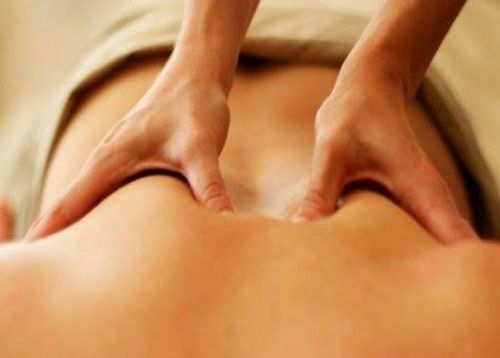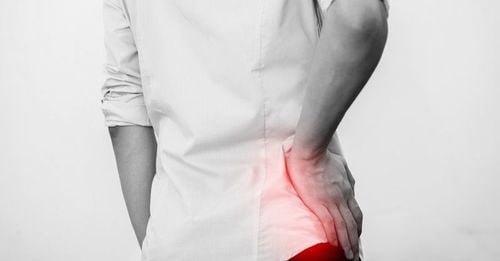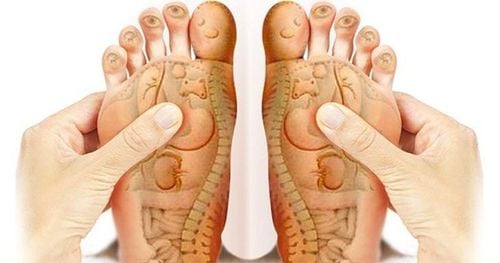This is an automatically translated article.
Massage therapy is a solution to help relieve pain and relax when you feel stressed; pain in the neck, back and shoulders. Here are the techniques you should know about how to self-massage your neck, head, back, and shoulders to relieve pain.
1. How does massage therapy help relieve pain?
Whenever you feel stress or pain, massage therapy can make you feel better. It is the movements of pressing, rubbing the skin and underlying muscles to help relieve pain, relax, and relax.
Self-massage can help manage chronic conditions like fibromyalgia or arthritis. However, it should not replace conventional medical treatment.
We have areas of dense muscle fibers, also known as trigger points, that can develop in any area of the body. Over time, stress and fatigue form a bad habit and we seem to accept living with them, making them denser. The body can cope with this less healthy muscle tissue segment; However, if not addressed by self-care or exercise, these trigger points can lead to muscle weakness, pain, limited range of motion, and low metabolic endurance. When our muscles are held in a tight position, we develop a localized energy crisis.
Massaging and stretching can bring local nutrient metabolism to the area and allow the muscle proteins actin, myosin and titin to unlock, so that nutrient-filled blood can enter the area and replenish the energy cycle of the cell.
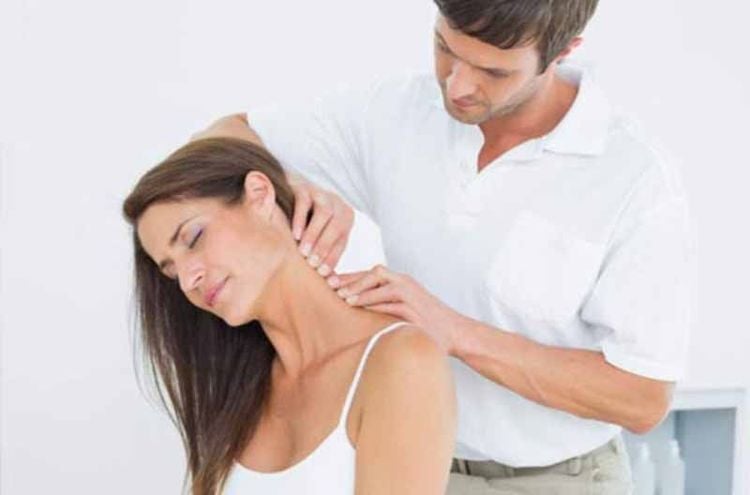
Liệu pháp massage sẽ giúp bạn giảm căng thẳng, đau nhức
2. 6 steps to remember to relieve pain with self-massage
Heat: Gently warm the area to be treated, with a heat source such as a hot pack, hot bath or hot tub; or wide movements like running in place or doing swimming moves. Identification: Identify the area to be worked on. Remember that 85% of the time, trigger points refer to pain in a somewhat remote area, so keep an eye out to best identify the muscles that may be causing your pain or problem. Compression: Apply compression with a tennis ball or bouncing ball rather than your own hands or strength. Keep discomfort at 5/10 and hold for 20 to 30 seconds with only 20 percent of your strength used. Stretch: Bring that area into a stretch position, then use 20% of your strength to contract, hold for 20 seconds, and coordinate the exhalation on the relaxed part and stretch further. It's best to focus on a long, slow exhale, 15 to 20 seconds long, more intentional than a deep inhale. This can help us activate the parasympathetic nervous system and allow relaxation of long-standing muscle tension. Range of Motion: Move the area you just worked on, and all nearby joint segments, to the most pain-free range you can. Focus on being relaxed and flexible in your movements. Repeat: Follow this sequence daily, until you notice the changes taking hold. As you become better aware of sore and bandaged muscle areas, you can reduce the frequency and length of your self-care sessions. You'll be better off focusing directly on the most difficult areas, getting the work done, and moving on to other areas.
3. Pain relief massage for neck, head, back, shoulders
Self-massage soothes pain. If your pain is caused by swollen muscles, you may also have occipital neuralgia or trigeminal neuralgia. This can happen when muscles press on your nerves. But by giving yourself a massage to relieve muscle pain, you can also ease nerve pain.
Here are massage techniques for some common types of pain:
3.1. Self-massage for neck and shoulder pain
Neck pain is often caused by overwork and poor posture. It can result from everyday activities, such as hunching over a laptop or phone, or reading in bed without adequate neck support.
If your neck feels tight and painful then try this self-massage technique
Relax your shoulders, keep your neck and back straight. Identify pain points on your neck. Firmly press with your fingers Gently move your fingers in a circular motion. Repeat in the opposite direction Continue for 3 - 5 minutes.
3.2. Self-massage relieves headaches and stress
If you are suffering from headaches, self-massage can help release tension and increase feelings of relaxation. This can be especially helpful if your headaches are caused by stress.
You relax your shoulders, keep your neck and back straight. Locate the base of your skull. Place the pointer and middle finger of each hand in the center, fingertips touching. Gently press and slide your fingers out or down, moving in the direction that feels best. Move your fingers in small circular motions. Focus on the stress point and its surrounding areas. You can also massage your temples, neck and shoulders
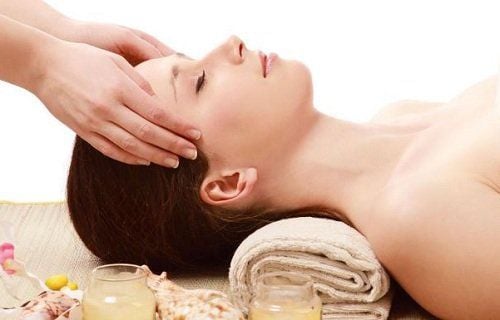
Vừa massage vừa nghe nhạc sẽ giúp thư giãn hơn
3.3. Self-massage for back pain
Back pain is a very common condition nowadays. It can have many causes, including but not limited to:
Muscle tension or spasms Nervous stimulation Spinal degeneration Structural problems Gentle forms of exercise such as walking, yoga or other Specific types of stretches can help relieve back pain.
Over-the-counter pain relievers and using a heating pad or cold compress on the back may help. Massage can also help with pain, including self-massage.
Here are two techniques to try for back pain:
Lower back
Sit on the floor, cross your legs, straighten your back Place your thumbs on each side of the sacrum, the flattened triangular part of the bone. at the bottom of your spine. Move your thumb in a small circular motion, moving up and down the sacrum. Apply pressure wherever there is tension. Pause, then release. Continue as long as you can, and remember to breathe deeply. You can also massage in a chair but make sure that your feet are on the floor and that you sit up straight.
Self-massage tennis ball
You can also massage your back by lying on a tennis ball. The intense pressure of the ball will likely relieve tension in your back.
Lie on your back on the floor, knees bent. Place the tennis ball just below the stress point in your back. Hold for 20 to 30 seconds. For more pressure, gently rotate your body to lean on the tennis ball. You can also cross one ankle over the opposite knee to increase pressure.
4. A few notes
Appropriate self-massage when you have mild pain. But if the pain is severe or constant you should see your doctor before trying it. If you're not sure what's causing your pain, self-massage can make your symptoms worse.
Also, self-massage and other forms of massage may not be safe for some people. Use caution or talk to your doctor first, if you have signs of:
Fractures Burns Unhealed wounds Blood clotting disorders Deep vein thrombosis Severe osteoporosis Severe thrombocytopenic purpura Lower hemorrhage Skin Cancer Record how you feel during and after your massage. If the pain gets worse or doesn't go away, self-massage may not be the best option.
Contact your doctor directly if self-massage does not improve your pain or makes it worse.
Vinmec International General Hospital with a system of modern facilities, medical equipment and a team of experts and doctors with many years of experience in medical examination and treatment, patients can rest assured to visit. examination and treatment at the Hospital.
Please dial HOTLINE for more information or register for an appointment HERE. Download MyVinmec app to make appointments faster and to manage your bookings easily.
References: healthline.com, massagemag.com





